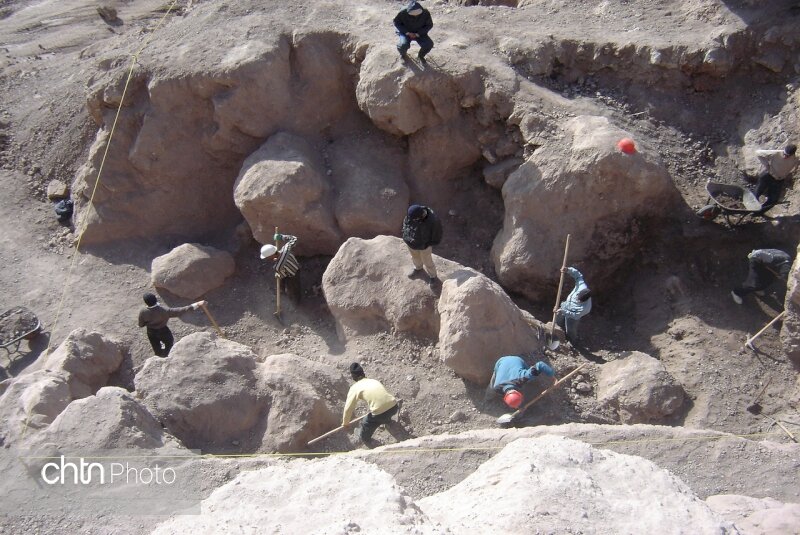Iranian, German archaeologists in search of human remains, relics inside ancient mine

TEHRAN – Clusters of Iranian and German archaeologists and cultural heritage experts on Tuesday commenced work in search of new human remains and relics inside an ancient salt mine.
Situated in the west-central Iranian province of Zanjan, Chehrabad Salt Mine previously yielded several salt mummies, arrays of personal objects, and tools once belonging to ancient miners who were trapped under tons of salts centuries ago.
“The fifth archaeological season has commenced [on Chehrabad Salt Mine] by archeological experts from Zanjan’s directorate of Cultural Heritage and tourism, and their German fellows of the Ruhr-University Bochum,” CHTN quoted the provincial tourism chief as saying on Tuesday.
"Moreover, surveying of the designated area, initial protection of [previously] excavated layer artifacts, reorganization of discovered objects, analysis of archaeological data and comparative comparison of data will be performed during the current excavation season that continues until mid-Azar [December 6], "Amir Arjmand explained.
Earlier this month, a special exhibition featuring Iranian and German studies on ancient mining and relevant objects was officially inaugurated at the National Museum of Iran. The exhibit puts the spotlight on the appropriation of humans to mineral resources and the development of the history of human experiences and achievements in mining, which led to the development of technologies, the formation of professions, trade, and specialization of industries. The event showcases arrays of personal objects, tools, and corpses once belonging to the famed Iranian salt mummies discovered in the Chehrabad Salt Mine. Similar loan exhibitions featuring ancient mining and relevant documents were already staged in Iran and Germany.
Last year, a team of experts from the two countries started a project for purifying, cleansing, and restoring garments and personal belongings of the mummies which were first found in the salt mine in 1993. What was a catastrophe for the ancient miners has become a sensation for science. Sporting a long white beard, iron knives, and a single gold earring, the first salt mummy was discovered in 1993. He is estimated to be trapped in the mine in ca. 300 CE. In 2004 another mummy was discovered only 50 feet away, followed by another in 2005 and a “teenage” boy mummy later that year.
In 1993, miners in the Douzlakh Salt Mine, near Hamzehli and Chehrabad villages, accidentally came across a mummified head. The head was very well preserved, to the extent that his pierced ear was still holding the gold earring. The hair, beard, and mustaches were reddish, and his impressive leather boot still contained parts of his leg and foot. The first mummy, dubbed the “Saltman”, is on display in the National Museum of Iran. The third, fourth, and fifth “saltmen” were also carbon dated. The third body was dated and placed in 2337 BP, the fourth body in 2301 BP, and the fifth mummy was dated to 2286 BP, placing them all in the Achaemenid period.
The isotopic analysis of the human remains revealed where these miners were from. Some of them were from the Tehran-Qazvin plain, which is relatively local to the mine’s locality, while others were from north-eastern Iran and the coastal areas around the Caspian Sea, and a few from as far away as Central Asia. Saltman No. 5 had tapeworm eggs from the Taenia sp. genus in his system. These were identified during the study of his remains.
The oldest-known mine on archaeological record is believed to be the Ngwenya Mine in Eswatini (Swaziland), which radiocarbon dating shows to be about 43,000 years old. At this site, Paleolithic humans mined hematite to make the red pigment ochre. Moreover, mines of a similar age in Hungary are believed to be sites where Neanderthals may have mined flint for weapons and tools.
AFM

Leave a Comment